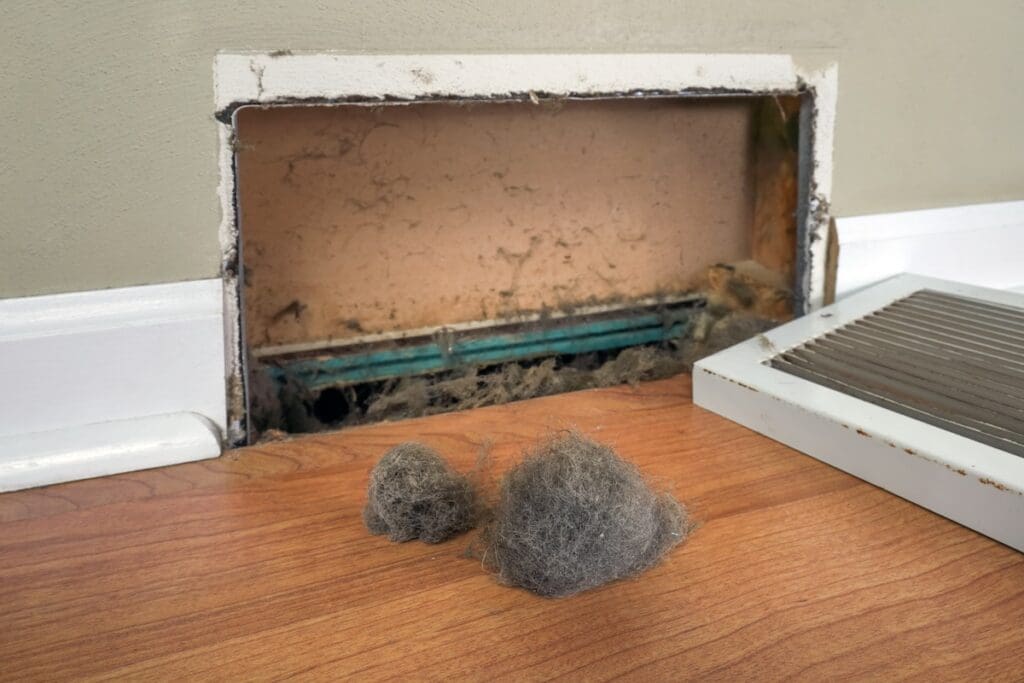The presence of mold in air ducts is a significant concern for homeowners and business owners alike. As these structures are essential for maintaining a comfortable and healthy indoor environment, ensuring they are free from contaminants like mold is crucial. Mold can impact not only the functionality of your HVAC system but also the quality of the air you and your loved ones breathe.

Understanding Mold: What Is It?
Mold is a type of fungus that thrives in damp, humid environments. It reproduces through tiny spores that float through the air and can settle in various parts of your home, including air ducts. Once settled, mold can grow rapidly if the conditions are right. This growth can lead to unpleasant odors, health issues, and even structural damage.
Signs of Mold in Your Air Ducts
Identifying mold in your air ducts can sometimes be tricky. However, there are a few telltale signs that you should be aware of:
Unpleasant Odors
If you notice a musty smell when your HVAC system is running, it could be a sign of mold inside the ducts.
Visible Mold
Sometimes, mold can be seen around the vents or inside the ducts themselves. Regular inspections can help you spot these early.
Allergy Symptoms
Increased allergy symptoms, such as sneezing, coughing, or eye irritation, can be a sign of mold exposure. allergy control.
Causes of Mold Growth in Air Ducts
Understanding what causes mold growth in air ducts can help prevent future problems. Some common causes include:
High Humidity Levels
When the humidity level inside your home is consistently high, it creates an ideal environment for mold growth.
Leaking Ducts
Any leaks in your air ducts can allow moisture to accumulate, providing a perfect breeding ground for mold.
Inadequate Ventilation
Poor ventilation can trap moisture and contribute to mold growth. Ensuring proper airflow is essential. clean vents.
Health Risks Associated with Mold
Mold exposure can lead to a variety of health issues, particularly in individuals with respiratory problems or compromised immune systems. Some potential health risks include:
Respiratory Problems
Inhaling mold spores can cause or exacerbate respiratory issues, including asthma and bronchitis.
Allergic Reactions
Mold exposure can trigger allergies, leading to symptoms such as sneezing, runny nose, and itchy eyes.
Skin Irritation
Direct contact with mold can cause skin rashes or irritation.
Preventing Mold in Air Ducts
Prevention is key when it comes to mold in air ducts. Here are some strategies to keep your ducts mold-free:
Control Humidity Levels
Use dehumidifiers to keep indoor humidity levels below 60%.
Regular Inspections
Schedule regular HVAC inspections to catch any mold growth early. commercial duct cleaning.
Maintain Your HVAC System
Regular maintenance can prevent leaks and ensure your system is functioning efficiently.
Addressing Mold in Air Ducts
If you discover mold in your air ducts, addressing it promptly is crucial. Heres how you can tackle the issue:
Professional Cleaning
Contact a professional duct cleaning service to thoroughly clean and sanitize your ducts.
Repair Leaks
Fix any leaks in your ductwork to prevent future mold growth.
Improve Ventilation
Ensure your home has adequate ventilation to reduce moisture buildup.

Frequently Asked Questions
How often should air ducts be cleaned?
Its recommended to have your air ducts cleaned every 3 to 5 years or more frequently if you notice signs of mold or other issues.
Can I clean mold from air ducts myself?
While minor mold issues can be addressed with DIY methods, its best to hire professionals for thorough cleaning and remediation.
Is mold in air ducts common?
Mold in air ducts is relatively common, especially in humid climates or homes with poor ventilation.
Addressing mold in air ducts promptly and effectively is crucial for maintaining a healthy indoor environment. Regular maintenance and inspections can prevent mold growth, ensuring that your HVAC system functions optimally and that your indoor air quality remains high. For more information on maintaining your air ducts, check out this proper cleaning methods.
This article contains affiliate links. We may earn a commission at no extra cost to you.